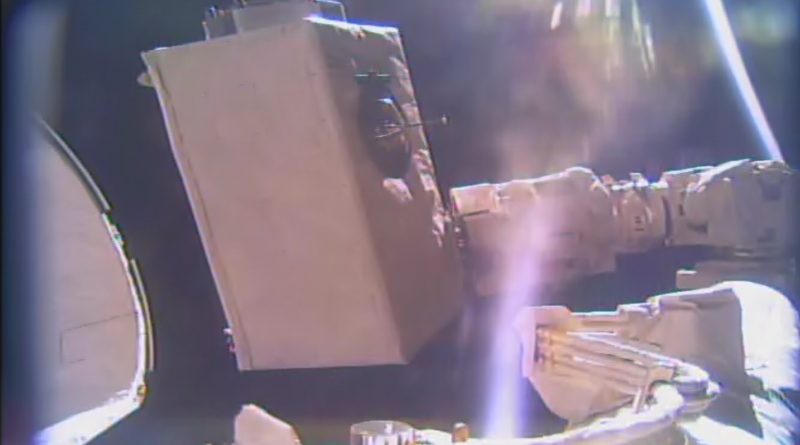New High-Energy Particle Detector Installed on International Space Station
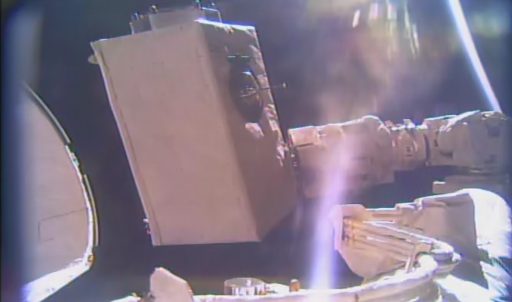
The International Space Station received a new flagship particle detector earlier this week when the CREAM instrument package was retrieved from the Dragon spacecraft’s Trunk Section and transferred – via robotic arm handshake – to the Exposed Facility of the Station’s Kibo module from where the instrument will keep track of incoming ultra-high-energy particles to help answer long-standing questions in astrophysics.
CREAM, the Cosmic Ray Energetics and Mass Instrument, lifted off on August 14 as the sole external payload on SpaceX’s 12th regular Dragon mission to the Space Station – the last in the original Commercial Resupply Services Contract and the last to use a newly-built Dragon vehicle. Dragon arrived at ISS two days after launch and robotics to extract the 1,258-Kilogram instrument picked up on Monday.
The Space Station’s 18-meter Canadarm2 was in charge of extracting the CREAM package from Dragon’s Trunk, followed by a maneuver to a handoff point where the Japanese Remote Manipulator System could grasp the second grapple fixture of the payload to mark a rare robotic handoff.
Last night ROBO team @NASA_Johnson & KIBOTT team @JAXA_en "shook hands"! #Canadarm2 handed @ISS_CREAM to #JEMRMS @Space_Station @csa_asc pic.twitter.com/4gAgT3YHy7
— Kam Bahrami (@ROBO_Kam) August 22, 2017
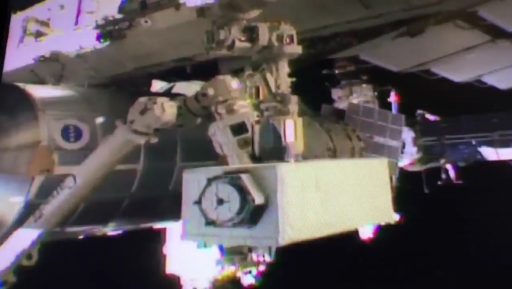
With JRMS in control, CREAM was moved over to the Station’s porch and carefully positioned on the EFU-2 slot to allow CREAM’s Payload Interface Unit to be mated to the Exposed Facility – forming electrical and data connections as well as fluid connections for thermal control. Mission Control reported that CREAM had been successfully activated and was transitioned into checkout mode to verify all instrument systems before starting science measurements.
CREAM’s tenure on ISS will last at least three years to vastly expand the data set collected by the balloon-borne CREAM system that flew six times between 2004 and 2010 and accumulated 161 days of measurements. Particles in the high energy range of interest are few and far in between, requiring either large detectors or very long integration times to capture statistically relevant data, driving the decision to re-package the balloon instrument and add new detector elements to create a system suitable for deployment to the International Space Station to capture a long-term data set.
>>Detailed Overview of CREAM and its Detector System
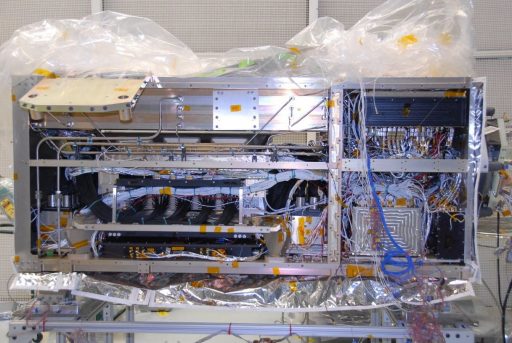
The CREAM instrument joins a number of astrophysics observatories already active on ISS – first and foremost the Alpha Magnetic Spectrometer 2, the Station’s flagship dark matter hunter that this year measured its 100 billionth cosmic particle. CALET, the Calorimetric Electron Telescope also active on the Kibo Exposed facility, is focused on measuring high-energy electron and X-ray spectra. Recently added to the Station’s astrophysics suite was NICER, hosing an array of 56 X-ray telescopes to study ultra-dense Neutron Stars and evaluate Pulsars as celestial navigation beacons.
CREAM hosts a stack of five different detectors that all work in unison to provide precise charge measurement, particle energies, particle direction and separation between protons and electrons. The instrument covers a broad energy range of 1010 to 1015 electron-volt and is hoped to reveal the mechanisms ongoing in the cosmos which can create such tremendous energies and how that affects the composition of the universe.
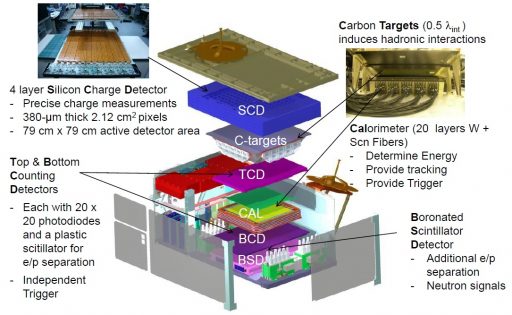
CREAM can measure particles at higher energies than the Alpha Magnetic Spectrometer 2 and is therefore hoped to reveal what causes a ‘knee’ or decline in the cosmic energy spectrum around a thousand trillion electron-volts where particle theory would not predict such a decrease.
The instrument is hoped to answer a number of questions in addition to addressing the spectral knee, probing the origin of cosmic rays and identifying the contribution of supernovae to the cosmic ray spectrum, looking into the past to assess the history of the cosmic particle distribution in the Milky Way galaxy and looking at single or combinations of mechanisms that could be an explanation for the cosmic ray spectrum.
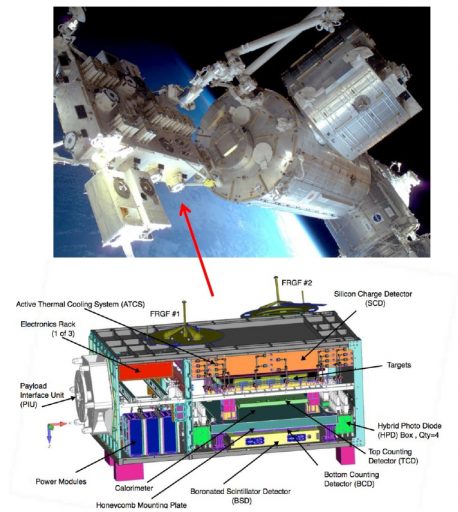
The overall goal of the CREAM experiment is stated as ‘extending the energy reach of direct measurements of cosmic rays to the highest energy possible to investigate cosmic ray origins, acceleration and propagation.’ Research into the high-energy mechanisms of the universe has made incredible progress over the past century, from high-altitude balloon missions with basic sensors to state-of-the-art particle detectors being deployed to space – including several on the International Space Station. However, even with ever increasing energy ranges, instruments used to date could not deliver the definitive answers that have so long been sought after by scientists across the globe.
With CREAM successfully powered on and ready for an exciting research mission, the Space Station’s robots moved on to a more mundane but equally important task – replacing an external circuit breaker box that exhibited unexpected trips since August 8/9. The trip signature is indicative of a Field Effect Transistor (FET) Hybrid failure which is a common way for these Remote Power Control Modules to fail and usually requires replacement of the box.
The RPCM in question powers the S-Band transponder for String 2 and the replacement is expected to restore redundant S-Band communications to ensure a solid voice link at all times.

